Use Foldscope in “Camera lucida” configuration – draw what you see
 Jun 03, 2016 • 11:26 PM UTC
Jun 03, 2016 • 11:26 PM UTC Unknown Location
Unknown Location 140x Magnification
140x Magnification Microorganisms
Microorganisms
Manu Prakash
I am a faculty at Stanford and run the Prakash Lab at Department of Bioengineering at Stanford University. Foldscope community is at the heart of our Frugal Science movement - and I can not tell you how proud I am of this community and grassroots movement. Find our work here: http://prakashlab.stanford.edu
266posts
1192comments
42locations
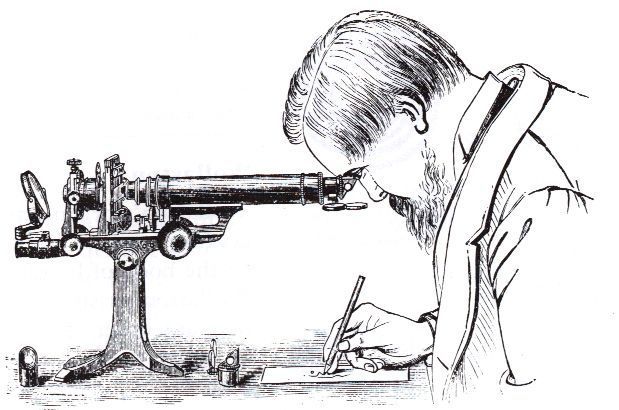
Foldscope is a stand alone tool; which can be coupled with a cellphone or other cameras to record what you see; but you DO NOT NEED a camera cellphone to actually experience the microscopic world. This is very important philosophical distinction that I have always maintained as an essential design element in a Foldscope. But as you know, to be able to share what you see – we all use camera phones to capture the images.
Today’s post is about using Foldscope in “camera lucida” mode; where you will have the direct ability to draw on a surface (paper) just using a simple pencil. This is very important since billions of kids around the world are not walking around with cellphones in the pocket.
If you want to start by reading the history of “Camera lucida” – you can start with this wikipedia link .
“The camera lucida performs an optical superimposition of the subject being viewed upon the surface upon which the artist is drawing. The artist sees both scene and drawing surface simultaneously, as in a photographic double exposure. This allows the artist to duplicate key points of the scene on the drawing surface, thus aiding in the accurate rendering of perspective.” – Wikipedia.
Now, traditionally camera lucida can be implemented in many different ways with the most common implementation including a beam splitter that combines the two images in one single frame. Here is an image of – Wollaston’s camera lucida (illustration was taken from the 1857 catalgue of Messrs Ross).
Today’s post is about using Foldscope in “camera lucida” mode; where you will have the direct ability to draw on a surface (paper) just using a simple pencil. This is very important since billions of kids around the world are not walking around with cellphones in the pocket.
If you want to start by reading the history of “Camera lucida” – you can start with this wikipedia link .
“The camera lucida performs an optical superimposition of the subject being viewed upon the surface upon which the artist is drawing. The artist sees both scene and drawing surface simultaneously, as in a photographic double exposure. This allows the artist to duplicate key points of the scene on the drawing surface, thus aiding in the accurate rendering of perspective.” – Wikipedia.
Now, traditionally camera lucida can be implemented in many different ways with the most common implementation including a beam splitter that combines the two images in one single frame. Here is an image of – Wollaston’s camera lucida (illustration was taken from the 1857 catalgue of Messrs Ross).

Now with a frugal instrument like foldscope, how do you implement an imaging modality where you can directly trace the drawing. Quiet simply by using “projection mode”. Here is what you will need to complete this post.
1. Read my previous post on Focus locking. It’s crucial for this; since your hands will be free to draw.
2. A simple LED flash light. I used this simple cheap keychain white LED with a “through pin” LED .
3. Pencil and paper (whatever you want to draw/paint with).
Start by setting up a focus locked Foldscope with the sample of interest. Use the LED light at the back to produce a nicely aligned projection mode. Now use tape to keep the LED mounted correctly (collimation is very useful and improves the image). Setup the system in such a way that the image formed is actually on a nice flat surface; pointing downwards. This is fairly simple to do – so I just share a image of my configuration. You can build a more permanent cardboard box that holds everything together.
1. Read my previous post on Focus locking. It’s crucial for this; since your hands will be free to draw.
2. A simple LED flash light. I used this simple cheap keychain white LED with a “through pin” LED .
3. Pencil and paper (whatever you want to draw/paint with).
Start by setting up a focus locked Foldscope with the sample of interest. Use the LED light at the back to produce a nicely aligned projection mode. Now use tape to keep the LED mounted correctly (collimation is very useful and improves the image). Setup the system in such a way that the image formed is actually on a nice flat surface; pointing downwards. This is fairly simple to do – so I just share a image of my configuration. You can build a more permanent cardboard box that holds everything together.
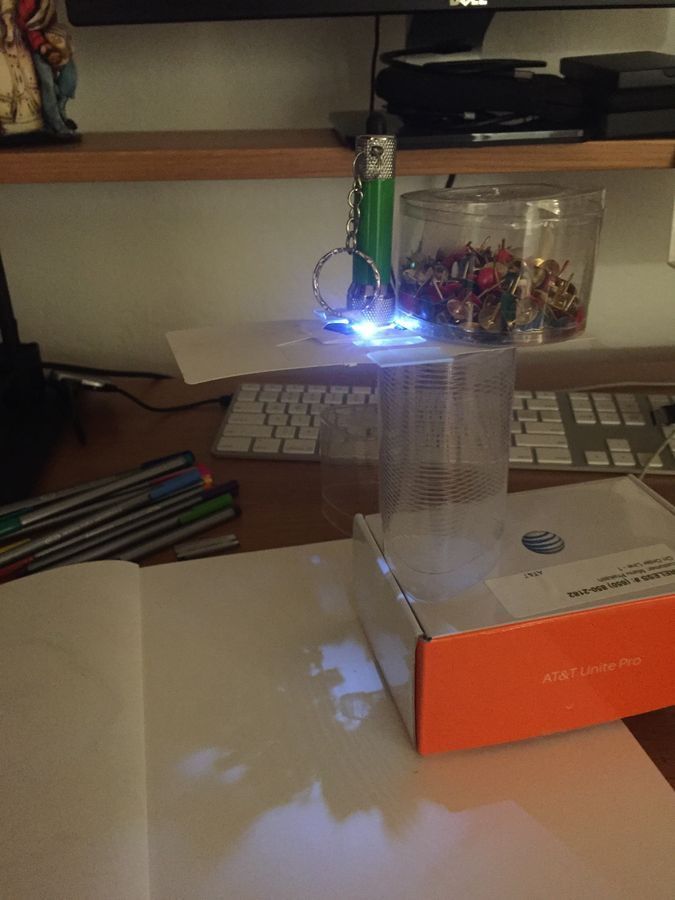
Now, when you turn the lights off in the room (to improve contrast) – you will see a beautiful “live” images of whatever you are imaging directly on your paper. Pick up a pencil and start drawing. This is what the image looks like when I turn the lights off.
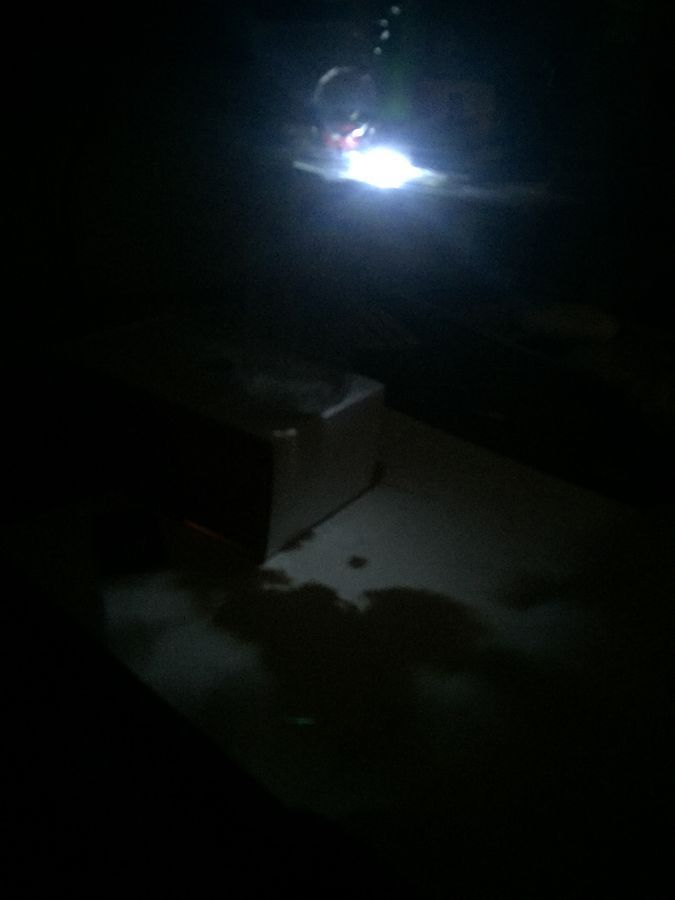
I like my fine sketch pens; and I have made several drawings before of what I see in this style. So I continued drawing in the same style – and here are a few images I recorded on my simple “camera lucida” setup.

As a comparison; here is a flatworm that I imaged. This video is taken via projection – looking at what I observe. I usually draw right on top of the image.
(More on this magical flatworm later..)
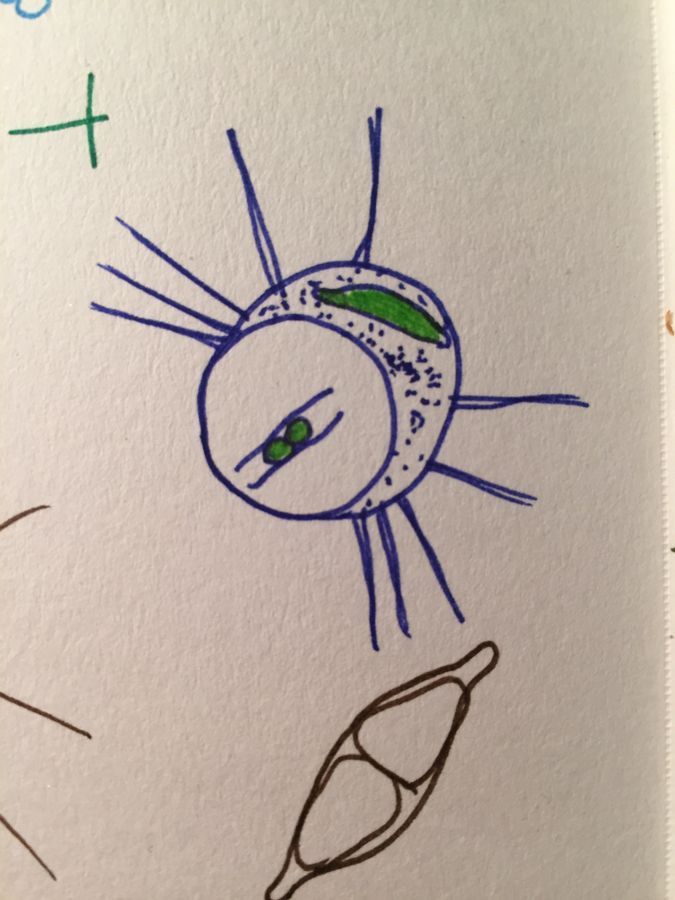
I often make grid points to align back my image to what I am drawing; just in case if I knock my setup. It’s simple and can be modified significantly.
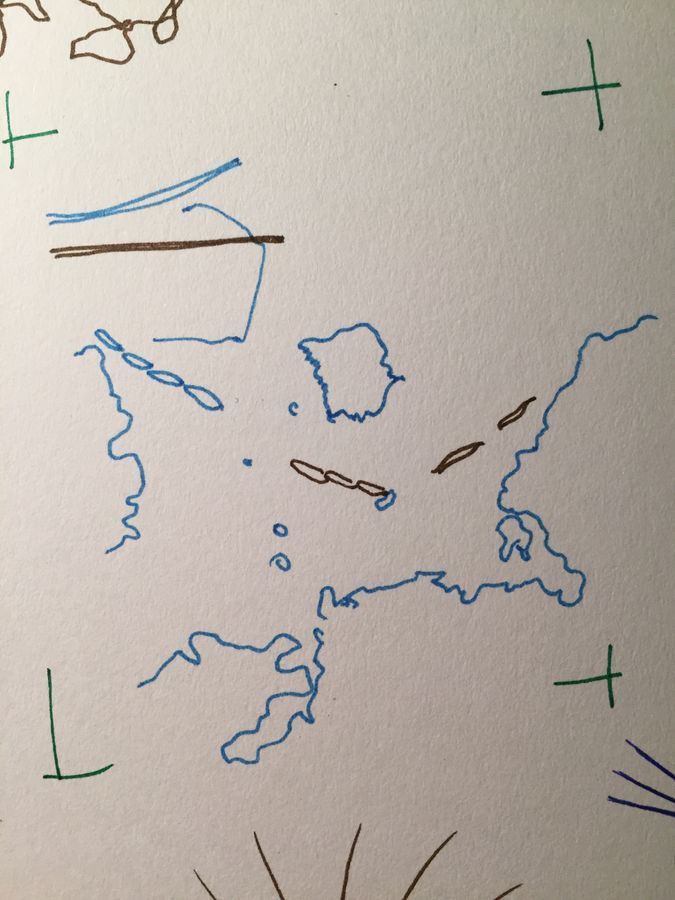
Since living systems move; here I capture a slowly crawling diatom in my field of view. By timing when I will draw the next image; I can see how fast it moves and crawls out of my field of view.
The joy of sketching what you see is not just for artistic purpose; although having an artistic license is valuable in itself. When you draw something; you translate not just what is on the image plane, but what you think is crucial and important to highlight. This distinction between an exact “photograph” and an “observation based drawing”. I usually make notes on the same drawing.. and
cheers
manu
–x–x–x–x–x–x–x–x–x–x–x
Note: As you might have seen in the original Foldscope TED talk; we also extensively developed a new version of Foldscope focused on “projection microscopy”. The latest tabletop version of this provides camera lucida feature for free at all times; with fantastic resolution (using optimal illumination patterns). I share an image as a teaser for you to see what is coming in the near future.
The joy of sketching what you see is not just for artistic purpose; although having an artistic license is valuable in itself. When you draw something; you translate not just what is on the image plane, but what you think is crucial and important to highlight. This distinction between an exact “photograph” and an “observation based drawing”. I usually make notes on the same drawing.. and
cheers
manu
–x–x–x–x–x–x–x–x–x–x–x
Note: As you might have seen in the original Foldscope TED talk; we also extensively developed a new version of Foldscope focused on “projection microscopy”. The latest tabletop version of this provides camera lucida feature for free at all times; with fantastic resolution (using optimal illumination patterns). I share an image as a teaser for you to see what is coming in the near future.
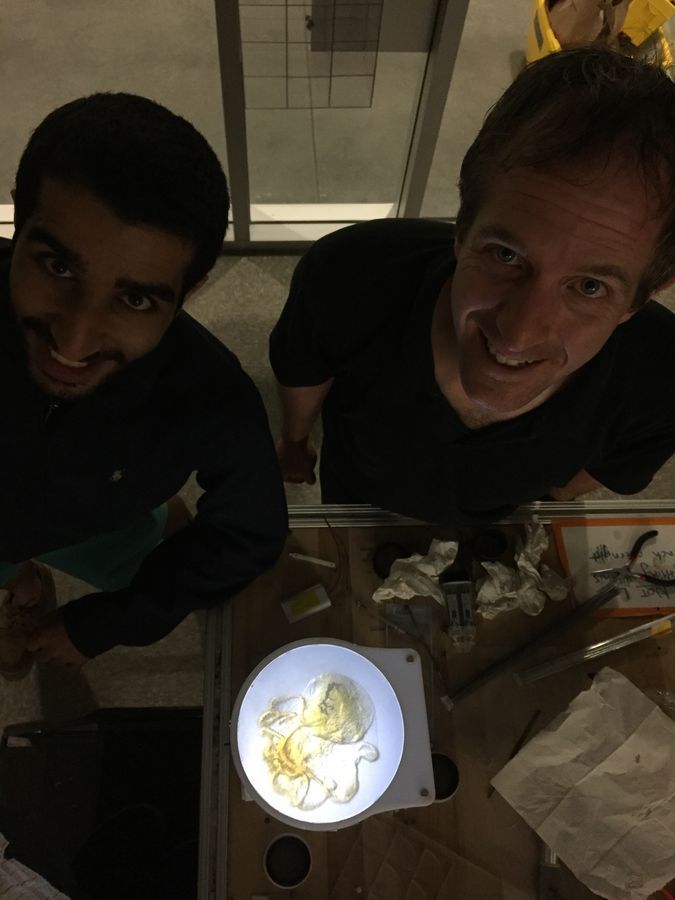
No; that is not a photograph but a live microscopic image ready for you to draw on from another incarnation of Foldscope (follow the blog for more updates later). I could not stop myself from picking a pen and drawing – even if it was 2am in the morning. The image also shows Jim Cybulski and Mark Kirollos – co creators of this magical instrument.
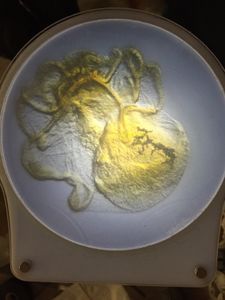
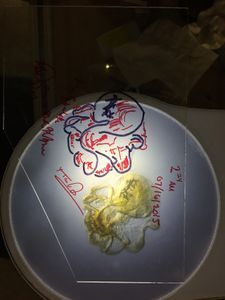
Sign in to commentNobody has commented yet... Share your thoughts with the author and start the discussion!

 0 Applause
0 Applause 0 Comments
0 Comments
















